Nothing illustrates the uniqueness of a culture as the way in which momentous personal events are celebrated: births, weddings and deaths. Last week was filled with a number of gatherings to celebrate Kawii’s life. This post shares in words, photos, video and audio clips, a bit of what I experienced as we celebrated his life and bid him farewell.
Initially reluctant to invade privacy by recording such events, I was encouraged by my colleagues. They reminded me that, Kawii, as our Communications Officer, would himself have been walking around with camera in hand, documenting community events like these for posterity. So… here’s to you, my friend.
There are a number of traditions and behaviors in Namibia that might be unusual to an American or European experience. For example, it is common after any fatal incident for masses to gather at the scene, even while the victims are being treated and investigations are underway. Kawii’s accident was no exception. Within a few minutes of receiving the first call or text Friday evening, people piled into cars to drive out of town to the site. The motivation for this practice isn’t to view carnage – but “to be close to where last breaths were taken.” Upon our return to town and throughout that first night, dozens of townsfolk walked back and forth the few blocks between Kawii’s house and his brother’s house. We were there to give moral support to, and share in the presence of, his grieving family. Shock and disbelief.
The Opening Ceremony
Each of the different Namibian tribes has its own traditions when it comes to the time period after death in which various events must occur. For example, the Damara honor their deceased for two weeks before burial. In Kawii’s case, as a Herero, it is customary to complete all the requisite steps in just one week. The following evening saw the Opening Ceremony: “opening,” as it were, a week of gatherings, services and celebrations. This ceremony was held in the backyard of Kawii’s brother’s house and included hymns, prayers, eulogies, tributes, messages of condolence and the collection of financial donations to help the family meet the funeral expenses. Realization that this really happened.
The Memorial Service in Arandis
The next big event was Wednesday’s memorial service in Arandis, which was the town’s chance to commemorate Kawii. Since the elders of his home village had determined that he would be buried there rather than in his adopted home town, it was the only chance for many of our local residents to pay their respects. Particularly if they couldn’t attend Saturday’s funeral, 2+ hours drive away. The memorial service lasted for several hours in our Community Hall and was packed despite the heat, with standing room only and many left outside. There was both formal singing of hymns and informal singing of folk songs, performances, speeches, tears and laughs. This is a life to be celebrated more than a loss to be mourned.
Click to enlarge…
The crowd filled the time waiting for proceedings to begin with impromptu singing.
Sweet Voices, a local youth choir, performed in their KKG language – can you hear the different clicks?
The Funeral at the Farm
On Friday and Saturday, hundreds of people traveled from throughout Namibia to Kawii’s family farm in his home village of Ondjiuombaranga. Those arriving the day before pitched tents, cooked braai and shared stories. A few colleagues and I left Arandis at 4:30 the next morning to make it in time for the 7:00 service. In the bright and warming sun, we heard hours of sermons, eulogies, stories, songs, performances and eating. I found a vantage point where I could see and hear people at the center of the activities as well as observe those gathering around – and being just behind the “kitchen,” I also watched food being prepared for later in the day.
The Herero women gathered together in their bright and colorful traditional attire of Victorian-style dresses and elaborate headdresses. The men, by contrast, were rather bland in their black, grey and brown. The multi-lingual characteristics of the country were in full display with nearly everything translated into both Otjiherero and Afrikaans, with a smattering of English and KKG.
When the funeral service ended, we loaded into cars and trucks for the 2km trip to the village cemetery. The sky clouded over and the wind picked up, giving us a break from the heat. I witnessed the practice of the Herero women who prefer to sit in the beds of pickup trucks over trying to fit themselves into the cabs. At the gravesite, men took turns shoveling spadefuls of dirt to bury Kawii’s coffin and cover it with floral tributes. Others uplifted our spirits with song.
Not “I’m sorry I’ll never see you again.” Rather, “I’ll see you again soon.”
Click to enlarge…
The sermon delivered in Afrikaans and immediately translated into Otjiherero.
A 360-degree panorama during the funeral service.
After the service, people started to make their way from the farm to the cemetery.
The men shoveled earth to lay Kawii to rest while others lifted spirits with their singing…


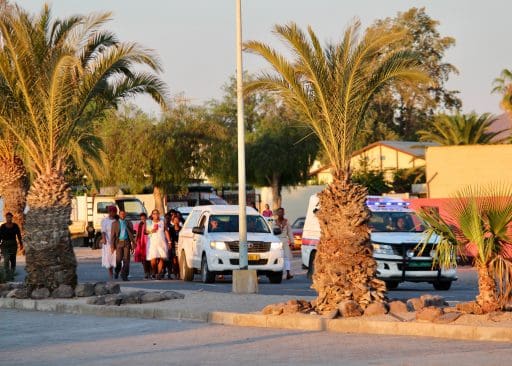

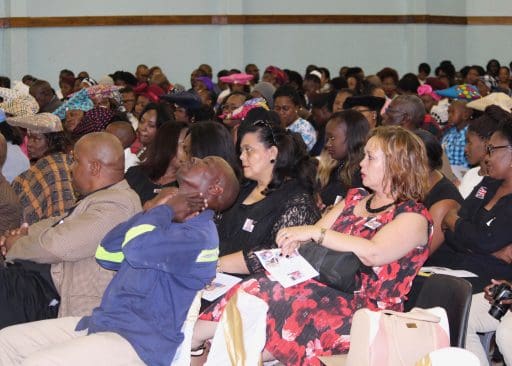

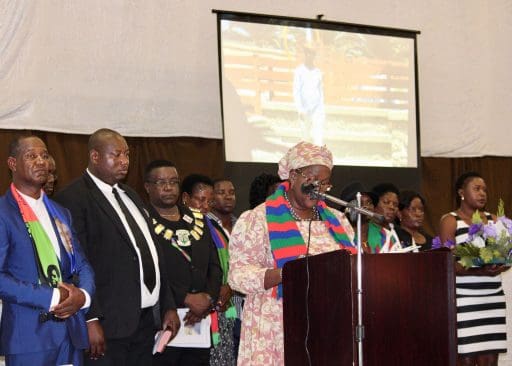

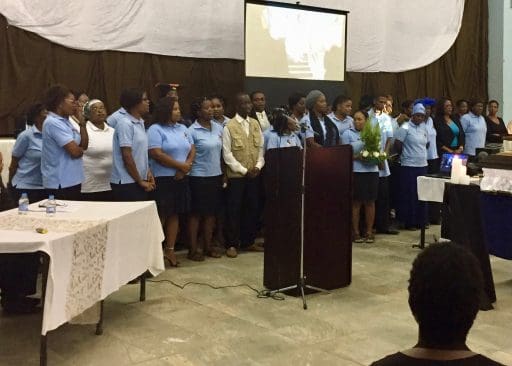

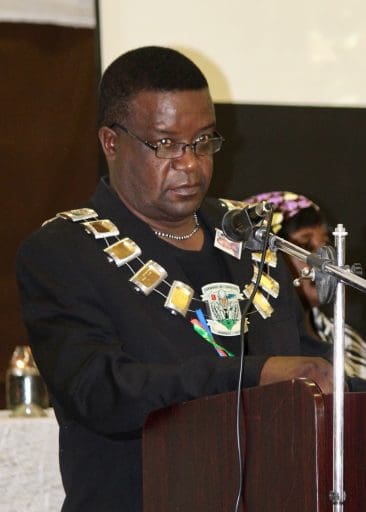
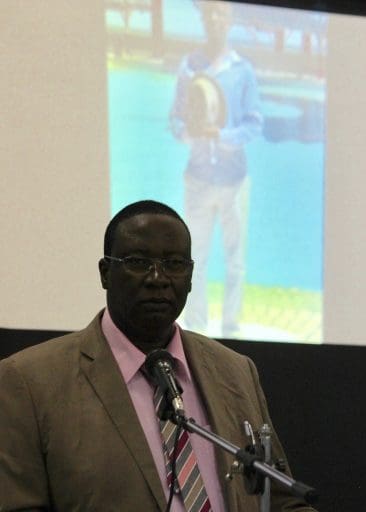
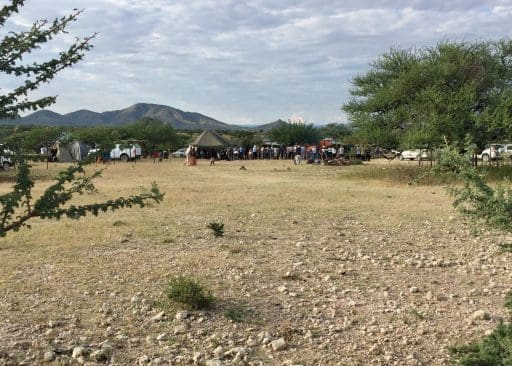
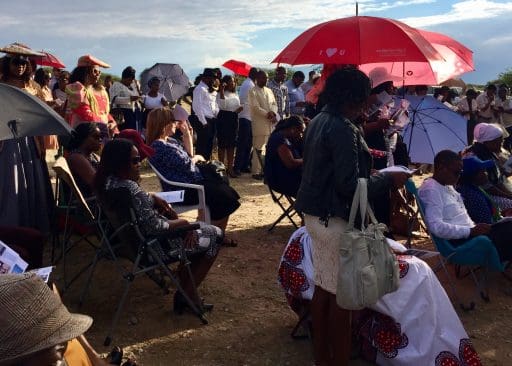
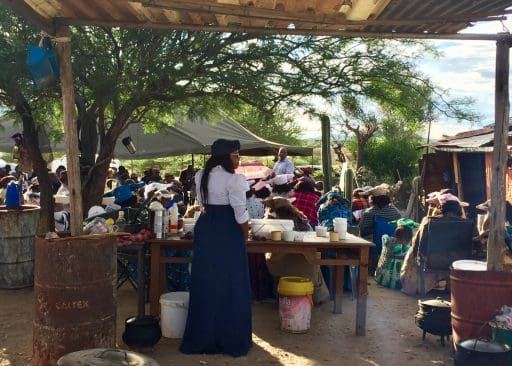
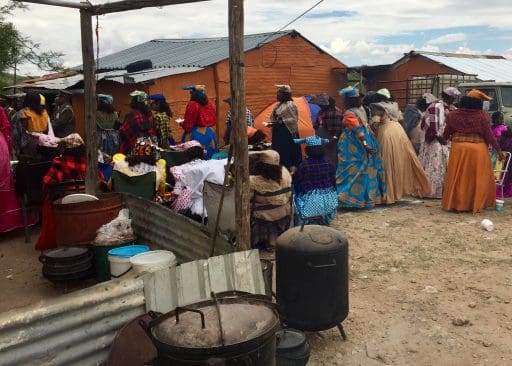
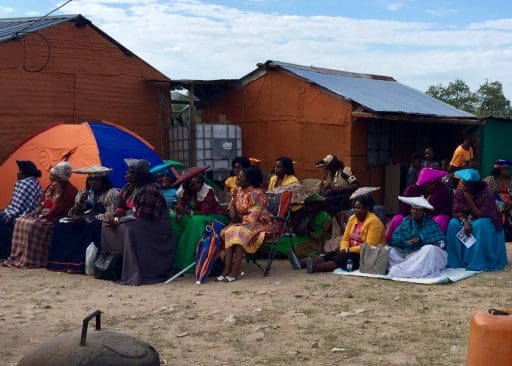
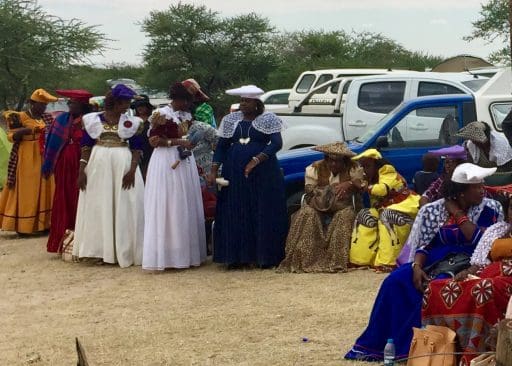
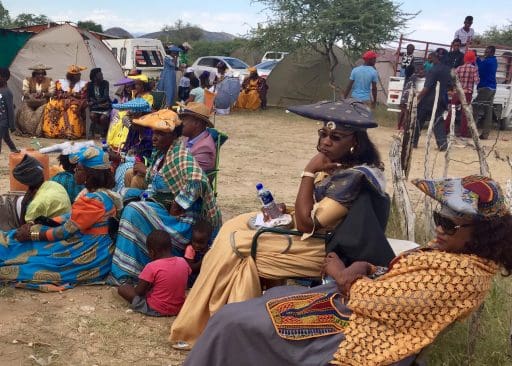
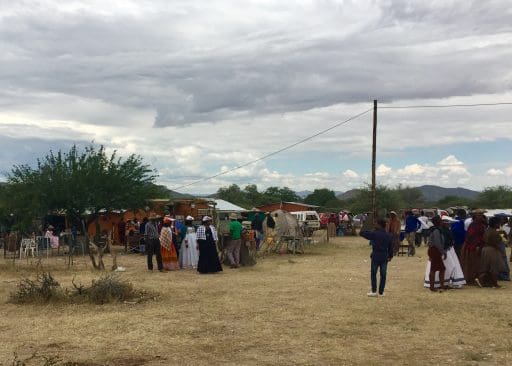
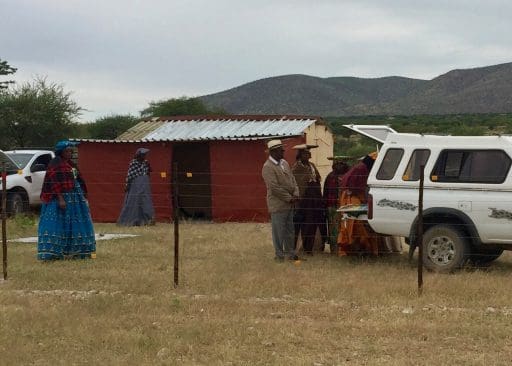

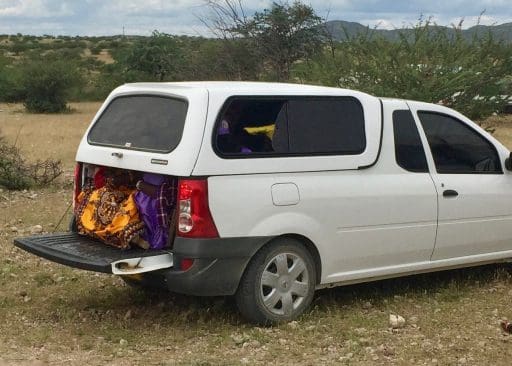
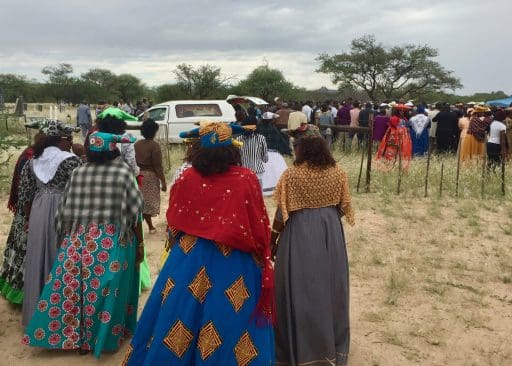
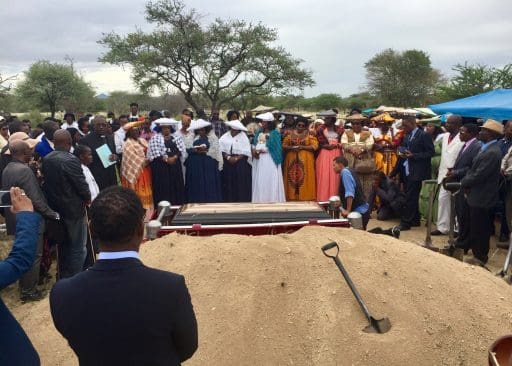
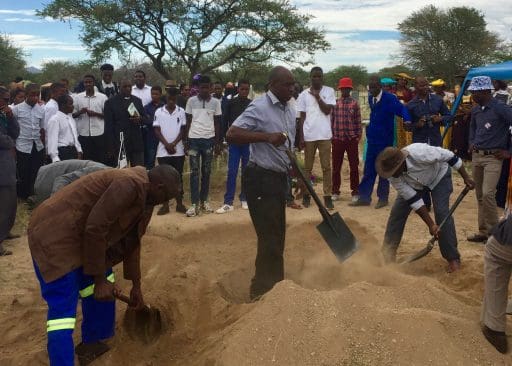
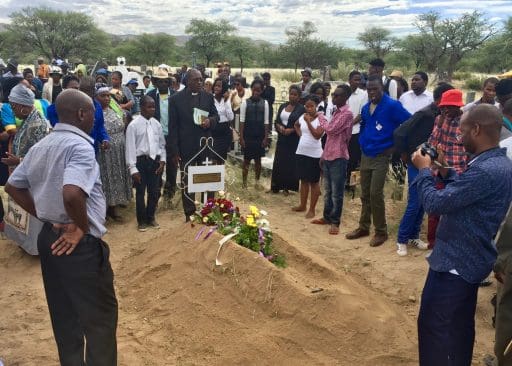
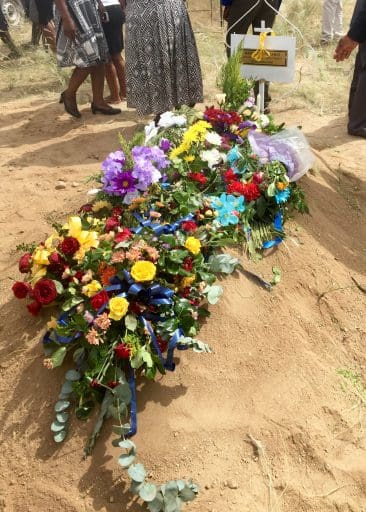
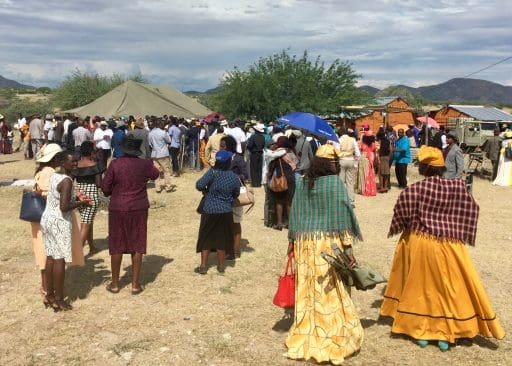
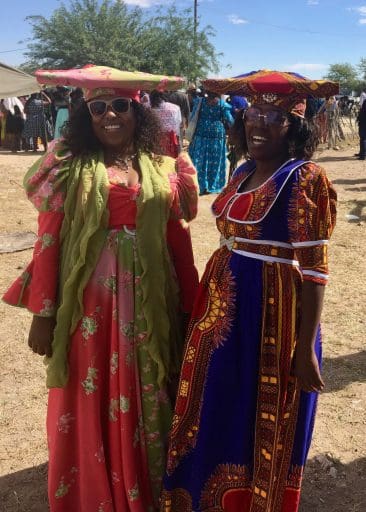
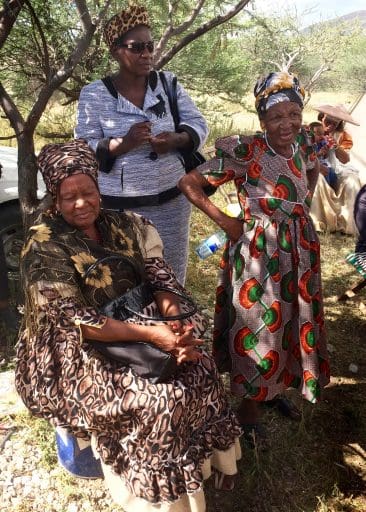
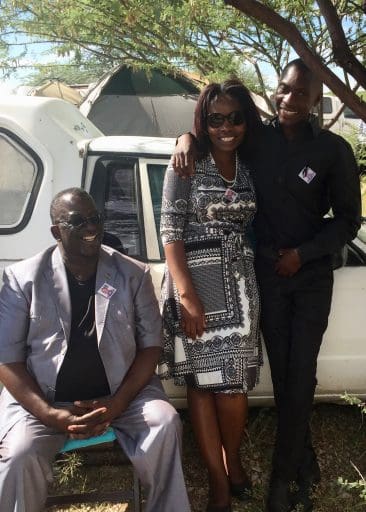
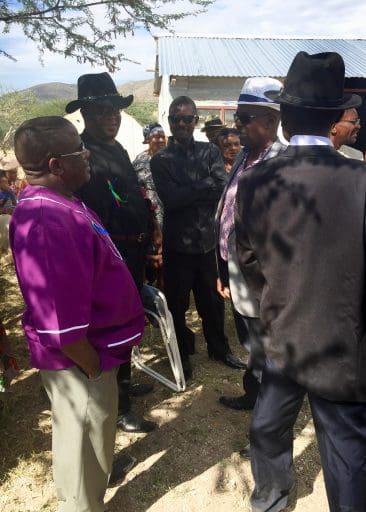
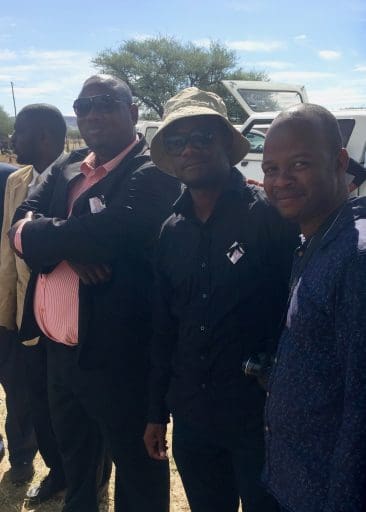
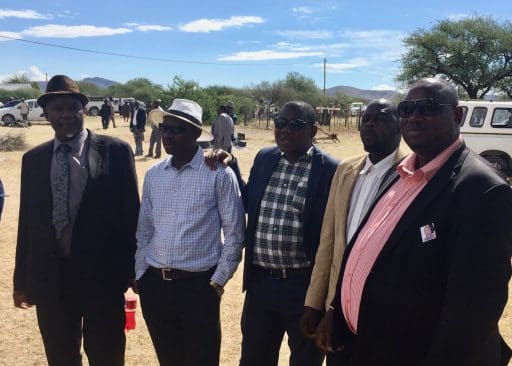
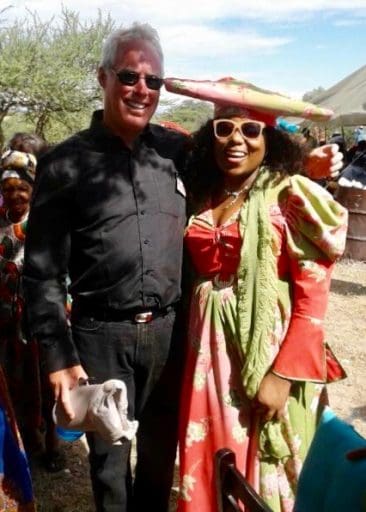
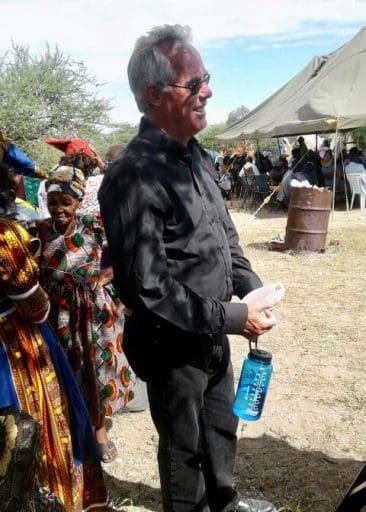
Thank you, Chris, for telling this story.
I feel the loss for a man that I never met… another reminder that life is short and that life experiences are what is important for our short time on this mortal coil…
Your chronicle here is a tribute to both Kawaii and to you…
All my best,
Cap’n Van
Wow Chris! You continue to touch my heart, broaden my mind and uplift my spirit with your thoughtful and intelligent posts. This edition about the death of your friend was especially powerful. I’m grateful from the depth of my being for your offering and gifts.
Blessings my friend
Mike